
|
SUMMARY:
Friction in your marketing funnel slows down prospects and drags down conversions. By systematically spotting and removing these snags, you’ll smooth the path to purchase – and boost your results. Below are seven steps to guide you, drawn from real-world case studies and Meclabs principles (MeclabsAI is the parent company of MarketingSherpa). |
Action Box: AI workflow to find and fix friction
MeclabsAI can do it with you. Try the multi-agent protocol workflow How to identify and fix friction in your funnel (MeclabsAI is MarketingSherpa’s parent company).
Friction is a non-monetary cost to your customers. It is difficulty in your conversion process.
You can never remove all friction. After all, filling out a form and entering shipping info is friction. And those are probably integral to your conversion objectives. If you’re tapping into your ideal customers’ motivations and clearly communicating a value proposition, your ideal customer will go through some level of friction to get the value on the other side of that conversion.
However, marketers and entrepreneurs often have friction they could reduce in a conversion process and still get the conversion objectives they need. For example, is every step in that form essential? Do customers really need to create an account just to purchase from you?
Examine your customers’ journey, and look for signals that prospects are hitting roadblocks:
Run your analytics in this step and spot your highest exit pages. A page with unexpectedly high exits often harbors friction.
Review other metrics as well. For example, a high session duration or time on page is often looked at as a good thing. And it certainly can be if there is content on a page. It can mean that you have quality content.
But high session duration can also signal confusion, not engagement. It can mean that users are wandering around because your site navigation or a particular form is confusing. So review heatmaps and user session replays to understand why they are spending so long on your site or a particular page.
Now that you’ve spotted friction, it’s time to pinpoint exactly where it lives.
This next step goes hand-in-hand with the first step, but it’s worth calling out both. Because you want to determine if there is friction in your customer journey in general. But to fix it, you also must understand exactly where the most hurtful friction is.
At this stage, you need to tightly focus. Maybe a specific landing page works great on desktop, but it’s a hot mess on mobile.
“I find that simply a range of browsers (Safari and Chrome for mobile, Safari, Chrome and Firefox for desktop) and a notepad are the best tools you can use when delving into a client’s funnel,” said Jack Roberts, marketing consultant, Jack Roberts Marketing.
Remember, friction doesn’t only happen on your website. It can happen anywhere in the customer journey, like in our next example.
Roberts was working with a client who did some great webinars which got decent attendance and had some brilliant evergreen whitepapers, but their nurture sequences after someone engaged were just ‘Meet our Newest Hire’ and ‘Here’s our Latest Product.’
This disconnect generated friction because prospects were forced to wade through self-focused updates that offered no clear benefit, prompting them to disengage.
Once he performed an audit, he set up segmented sequences to give the prospects relevant content based on what the company already knew about them. In the case of the webinar attendees, prospects were sent case studies which solved similar problems, a white paper that covered the topic, and an invite to a future webinar on an adjacent topic.
This resulted in 8× more actual MQLs per month, almost immediately.
When looking at the customer journey, don’t stop at the purchase. Remember, post-purchase is part of the customer experience as well, like in our next example.
Roberts had a client who manually asked happy customers for reviews and testimonials over the phone, as and when the marketing team needed them. This often meant that customers were being contacted months after their purchase, which unsurprisingly had a low response rate and often created substandard testimonials.
The friction came from the unexpected, out-of-context phone calls that interrupted customers’ day and forced them to recall a purchase they had long since moved on from.
By creating a proper onboarding email sequence and including a social proof request a couple of weeks after purchase, the client saw a 45% increase in testimonial request success. This change also directly influenced at least three large referrals in the following two months.
The first two steps give you a good idea of what’s happening and where it’s happening.
Now on to the essential question – why?
That’s where you can turn to the real human beings who are your ideal prospects. Collect insights through:
When gathering this qualitative feedback, be careful. It’s easy to focus on the loudest voices. But they may be outliers. Make sure you are looking through enough responses to spot consistent themes.
In year’s past I would have just stopped this step with the info above. However, it’s 2025. And we now have artificial intelligence. While hearing directly from your ideal prospects is still the gold standard, it can take time and be expensive.
A quick and cheap way to get qualitative feedback is to build a version of your ideal customer in AI, and then ask it questions or ask for ideas about your funnel. It can do an amazing job of providing qualitative feedback.
I regularly teach a webinar where I help marketers and entrepreneurs get unstuck. On a recent webinar, a mental health practitioner said she was getting negative reviews, and asked ‘Are there ways to prevent misunderstandings upfront by settling clearer expectations in my marketing materials?’
So I asked MeclabsAI to look at her website as if it were her ideal customer and give qualitative feedback. You can see that output starting at 28:33 in Get Unstuck: Live group coaching on your advertising and marketing messages (replay).
You can’t fix everything at once. So now it’s time to prioritize. A major bottleneck on a low-traffic page may be less urgent than a milder issue on your main landing page.
Rank issues by:
Use a simple 2×2 matrix (impact vs. effort) to decide which fixes to tackle first…but leave room to veto any changes that incur unacceptable levels of risk.
To help them find friction fixes to prioritize, the team at Pearl Lemon uses a set of tools for friction hunting. “Hotjar for screen recordings, Google Tag Manager for events, and simple Loom DMs for qualitative insight. Also partial to Typeform NPS follow-ups,” said Deepak Shukla, CEO, Pearl Lemon.
For example, when the team launched a course funnel, they could get plenty of clickthroughs to a signup page but were far less successful getting opt-ins on that page.
When looking at scroll depth, they could see that over 70% of users bounced from the signup page before hitting the form. Of the ones who made it to the form, less than 10% started filling it out. So they prioritized fixing the signup page…or to be more specific, doing away with it entirely.
“I had a feeling (read: gut panic), so I did something drastic – scrapped the funnel page entirely and replaced it with a Google Form,” Shukla explained.
The form was simple. It just asked for:
“Reduced friction massively with the Google Form,” he told me. The signup pages was getting a 1.1% opt-in rate. “After the Google Form, it hit 3.4% in 24 hours,” Shukla said.
Once the form proved itself, the team still wanted to keep things simple but did add some branding. “We wrapped the Google Form in a branded container on a subdomain,” he said.
The seven-day average held steady at 3.1%. At 30 days, the form was getting 2.9% – still 2.6x higher than before.
Now that you’ve found your quick wins, implement the changes you think will improve conversion.
Friction is defined in the Meclabs Conversion Sequence Index heuristic as any element of the experience that makes the process feel long or difficult.
So make it shorter (remove unnecessary steps). Or feel easier (add inline help for confusing form inputs).
Here’s an example of each to get you thinking.
“I'm the founder of AirROI, an AI-powered pricing platform for Airbnb hosts, which means our funnel is the backbone of our business,” said Jun Zhou, founder, AirROI. “I used to chase top-of-funnel traffic like it was the only thing that mattered. But I learned the hard way that no amount of new leads will save you if your funnel is full of friction.”
The team reduced the form on the setup page from 18 fields to five. Completion rates jumped 34% in a week.
They also made their post-activation onboarding campaign simpler. “I replaced our long-form educational emails with two-line prompts, paired with Loom walkthroughs,” he said.
Length-oriented friction is more straightforward to most marketers. Difficultly isn’t always as obvious. So here’s an example to help you spot difficulty-oriented friction in your brand’s funnel.
“We identified from the data that if we answer an inbound lead within the first 10 minutes of reaching out, our conversion rate to an opportunity with the salespeople increases to 80%, and conversion to a customer increases by 40%. The more time it takes, the fewer conversions we get (more than an hour response time reduces the conversion by almost 50%),” explained Asaf Raz, VP of marketing, Agora Real Estate.
A delay between a prospect’s inquiry and your first human reply is classic difficulty-oriented friction because the customer must wait, wonder, and perhaps begin another vendor conversation while they wait.
So the team also measured the response time of the competition, which is usually two to four hours at best.
To decrease friction, they implemented these high-impact solutions:
Performance literally doubled, and on calls they keep hearing how customers appreciate the fast turnaround.
“When they reach out to us, they already have a challenge, and getting back to them so quickly builds trust and confidence in our ability to best serve them as a partner,” Raz said.
Every change is an experiment. The gold standard is to run A/B tests against your current version. But that isn’t always possible.
So at least make sure you view any change you make as an experiment (not a certainty) and go back and see the effect of the change. After all, even if you follow all of the above steps to the letter, you are just making a guess, an educated and informed guess, but still a guess.
So treat it like a hypothesis and make sure you followup to see how it performed.
“In B2B, we rarely have the volume for perfectly isolated tests – and pretending we do creates false precision,” said Andrea Lechner-Becker, chief strategy officer, GNW Consulting.
One such unofficial test she ran was reducing friction by providing demo videos. Instead of having to get on a call with a sales rep to understand how the product worked, prospects could just watch the videos. They weren’t even gated.
“When I was at Toolio, we created a quirky YouTube series called Fast FWD to show real jobs in action. Each one was short, specific, and spoke directly to the user’s need,” said Lechner-Becker.
They saw an improvement in conversion and time on page. The team also received positive feedback from people who watched the videos and then ended up reaching out to Sales for a custom demo.
She encourages marketers and entrepreneurs to follow the Jobs-To-Be-Done Framework when creating video topics, and not be intimidated by video production itself. “You don’t need a Hollywood production team. You can do all of this in an hour with Descript,” Lechner-Becker said.
Funnel optimization is never ‘done.’ Build a feedback loop to make sure you are constantly monitoring for signs of friction, and benchmarking what changes work with your unique customers…and which don’t.
As mentioned at the beginning of this article, some level of friction exists in every funnel. The only way to have a totally frictionless experience is not to ask for a conversion at all.
Some products will naturally have more friction than others. For example, while ecommerce is on the lower end of the friction spectrum (you don’t even have to leave your house), tourism tends to be on the upper end of the spectrum (not only do you have to leave your house, you also have to live your city, state, and maybe even country).
A strong brand can help propel the ideal customer to push through that friction to receive the value your company delivers. Here’s an example.
At Universal Orlando, upper-funnel ads on TV and out-of-home seemed to deliver little value – when measured by clicks or immediate sales. But the team realized there could be more to the picture.
They used marketing mix modeling to estimate how media exposure drove revenue above a base revenue. And then they went a step further. They used time series modeling to consider that base revenue could be influenced by long-term media exposure as well.
By taking a long-term view, they realized that some upper-funnel channels delivered a more than 4x total ROI when measured over a three-year window. They saw the impact of paid media to help improve conversion for more channels that are easier to attribute revenue to. And they also saw that is helped grow the overall revenue base over time.
“Brand-building drove familiarity and trust – making bottom-funnel clicks more likely to convert,” explained Venkat Kokku, data scientist in the marketing data science department at Universal Orlando Resort. “Paid media – especially offline – can expand our base over time, even if attribution models don’t capture it directly.”
They re-run the marketing mix modeling every 45 to 60 days, and the time-series model every six months.
“There are Tableau dashboards and Excel reports that summarize the model results in all the possible cuts and views which provide the complete story. The story sends a signal if there is anything to watch out for,” Kokku said.
They also constantly re-evaluate the models, and intentionally re-score them if there is new data or business changes. “When models are updated, all changes are clearly communicated to the team and stakeholders. We also document everything in Confluence so there is a transparent record of what changed, when it changed, and why,” he said.
Turn your knowledge assets into a new revenue stream – MarketingSherpa has teamed up with parent company MeclabsAI to produce a research study. We are granting 10 AI engineering vouchers worth $5,000 each to eligible companies.
B2B Growth Killers: How 3 companies identified friction that hindered results
Incentive: The bacon of marketing tactics
How to Use Social Media to Increase Your Marketing Conversion
Get Better Business Results With a Skillfully Applied Customer-first Marketing Strategy

The customer-first approach of MarketingSherpa’s agency services can help you build the most effective strategy to serve customers and improve results, and then implement it across every customer touchpoint.
Get More Info >MECLABS AI
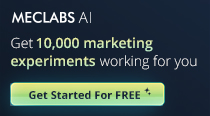
Get headlines, value prop, competitive analysis, and more.
Use the AI for FREE (for now) >Marketer Vs Machine
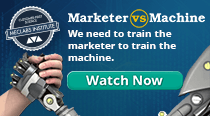
Marketer Vs Machine: We need to train the marketer to train the machine.
Watch Now >Live, Interactive Event

Join Flint McGlaughlin for Design Your Offer on May 22nd at 1 pm ET. You’ll learn proven strategies that drive real business results.
Get Your Scholarship >Free Marketing Course
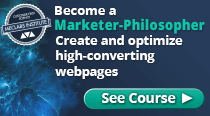
Become a Marketer-Philosopher: Create and optimize high-converting webpages (with this free online marketing course)
See Course >Project and Ideas Pitch Template
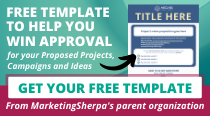
A free template to help you win approval for your proposed projects and campaigns
Get the Template >Six Quick CTA checklists
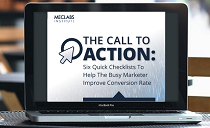
These CTA checklists are specifically designed for your team — something practical to hold up against your CTAs to help the time-pressed marketer quickly consider the customer psychology of your “asks” and how you can improve them.
Get the Checklists >Infographic: How to Create a Model of Your Customer’s Mind
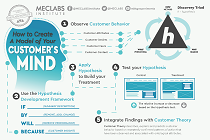
You need a repeatable methodology focused on building your organization’s customer wisdom throughout your campaigns and websites. This infographic can get you started.
Get the Infographic >Infographic: 21 Psychological Elements that Power Effective Web Design
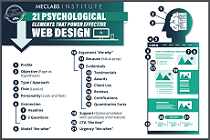
To build an effective page from scratch, you need to begin with the psychology of your customer. This infographic can get you started.
Get the Infographic >Receive the latest case studies and data on email, lead gen, and social media along with MarketingSherpa updates and promotions.